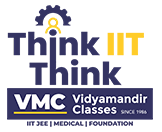Exam Paper Analysis: JEE Main (Session-2) Day 4, Shift 1
 Posted On
Posted On
280 total views, 1 views today
On April 11, 2023, the JEE (Main) Paper-I for candidates seeking admission to B.E. or B. Tech programs was held. Students had until 8:20 am to report, however the exam didn’t start until exactly 9:00 am. About all of the CBSE Board’s Class XI and XII chapters were covered by the questions. In terms of chapter covering, the paper was balanced according to the students.
- There were 30 questions in Part I, Physics- There were 20 multiple-choice questions in Section I, each with a single right response, and 10 numerical-based questions in Section II, of which only five were required to be answered. The scoring system for multiple choice questions was +4 for a right answer, -1 for a wrong answer, and 0 if you didn’t try. The marking scheme for questions with numerical answers was +4 for the right answer and 0 in all other circumstances. This section received a total of 100 marks.
- There were a total of 30 questions in Part II, Chemistry- Twenty multiple-choice questions with a single correct answer were included in Section I, and just five of the ten numerical-based questions in Section II were to be attempted. For multiple choice questions, the marking scheme was +4 for a right answer, -1 for a wrong answer, and 0 if no attempt was made. For numerically based questions, the marking scheme was +4 for a right answer, -1 for a wrong answer, and 0 in all other circumstances. There were 100 marks awarded for this section.
- There were 30 questions altogether in Part III, Mathematics- Twenty multiple-choice questions with a single correct answer were included in Section I, and just five of the ten numerical-based questions in Section II were to be attempted. For multiple choice questions, the marking scheme was +4 for a right answer, -1 for a wrong answer, and 0 if no attempt was made. For numerically based questions, the marking scheme was +4 for a right answer, -1 for a wrong answer, and 0 in all other circumstances. There were 100 marks awarded for this section.
Students Opinion:
- Mathematics: Moderate level. All aspects were covered in the questions, however chapters on algebra and calculus received the most attention. There were four to five questions each on vectors and three-dimensional geometry, the binomial theorem, progressions, matrices, mathematical reasoning, statistics, permutation and combination, probability, straight lines and circles, parabola, definite integrals, area, and differential equations (2 questions). There were numerous calculations in the numerical section. Conic Sections included mixed-concept questions. Some of the questions were labelled as trickier.
- Physics: Easy level. Kinematics, Heat & Thermodynamics (3–4 questions), Kinetic Theory of Gases, Gravitation, Rotational Motion, EM Waves, Electrostatics, Magnetism, AC Circuits, Current Electricity, Modern Physics, and Ray Optics were among the topics covered in the exam. Questions based on numbers were simple. According to the pupils, this portion was balanced overall.
- Chemistry: Simple to Intermediate Level Chemistry. Physical and organic chemistry received less weightage than inorganic chemistry. The majority of the problems with a numerical basis were from the physical chemistry topics of solutions, electrochemistry, chemical kinetics, mole concept, and ionic equilibrium. Moreover, questions from Environmental Chemistry, P&D Block, Phenols, Chemical Bonding, and Coordination Compounds were asked. The topics of Amines, Aldehydes & Ketones, Biomolecules, and Polymers were the focus of certain mixed-concept problems in Organic Chemistry.
In terms of difficulty, Physics was the easiest of the three subjects, followed by Mathematics at a Moderate Level. According to the students, this paper was overall of a Moderate level.



